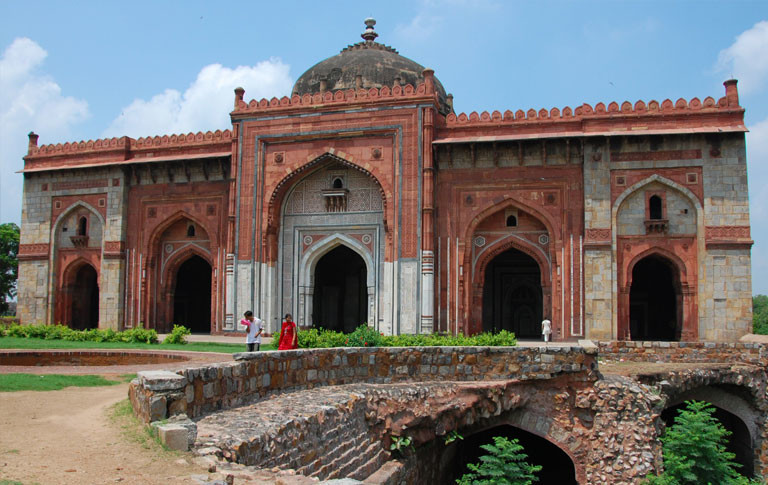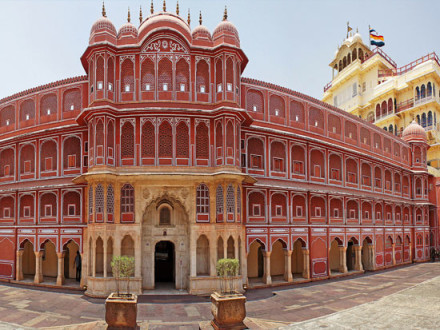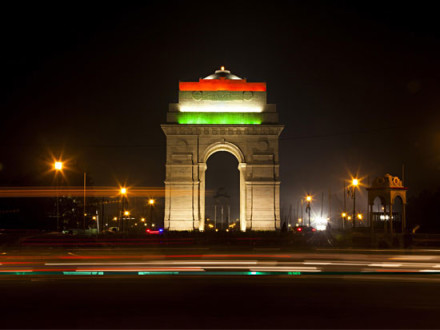Built by Shershah in 1541, the Quila-i-Kuhna mosque is comprises of a single dome and showcases Mughal design in a splendid manner. Comprising of five doorways you will find the mosque to have horse shoe shaped arches that are also pointed. The mosque was constructed to be a Jami mosque – Friday mosque. The mosque comprises of a prayer hall and a single aisle. The western hall comprises of five beautiful arched Mihrabs. Red and white shaded marble have been used and for the central iwan a slate has been used to leave the calligraphic inscriptions.
The mosque once comprised of a courtyard with a shallow tank and a fountain. You can find remains of decorative plaster work and traces of stone shelving. The shelves were learned to be the place where the emperor stored his books. The stone shelving is learned to be the spot where Humayun fell from the second floor and breathed his last in 1556. Humayun died while he was heading in a hurry for his evening prayers. Humyaun succumbed to his injuries after two days of the fall.
Quila-i-Kuhna mosque Complex
The Quila-I-Kuhna mosque is present within the Purana Quila complex. Humayuns library too is located within the complex. However the entry to the library is prohibited. There are other prominent monuments and structure within the complex worth visiting such as Kairul Manzil, Shershah Suri Darwaza, and SherMandal. The Quila-I-Kuhna mosque has a narrow passage that runs along the rectangular halls and is provide space for praying for the royal muslin female courteous. The ornate gateways were beautiful embellished with frame comprising of Jharokha. The marble slab within the mosque reads that as long as people on earth exist, may the people be happy and cheerful.”
The mosque remains as the best reserved monument in Purana Quila. Besides the mosque housed within the fort complex is Shermandal. Initiated by Shershah in initial stages but completed by Humayun this double storied octagonal tower made of red sandstone comprising of steep stairs was supposed to be higher than its existing height. Shermandal was initiated by Babur who used the mandal as his personal observatory. It was also used as the library for his son Humayun.
Shermandal
Shermandal is also considered one of the first observatories in Delhi city. The Shermandal tower has an octagonal pavilion – Chattri with support from eight pillars. White marble is used to decorate and it appears in Mughal style. It is the observatory and Humayuns hobby of star gazing that cost him his life. He fell headlong down while hastening to his evening prayer. Two days later Humayun departed from the world due to the heavy impact of the fall.
Both Shermandal and Quila-I-Kuhna mosque add to the historical and architectural galore of the Purana Quila complex.




